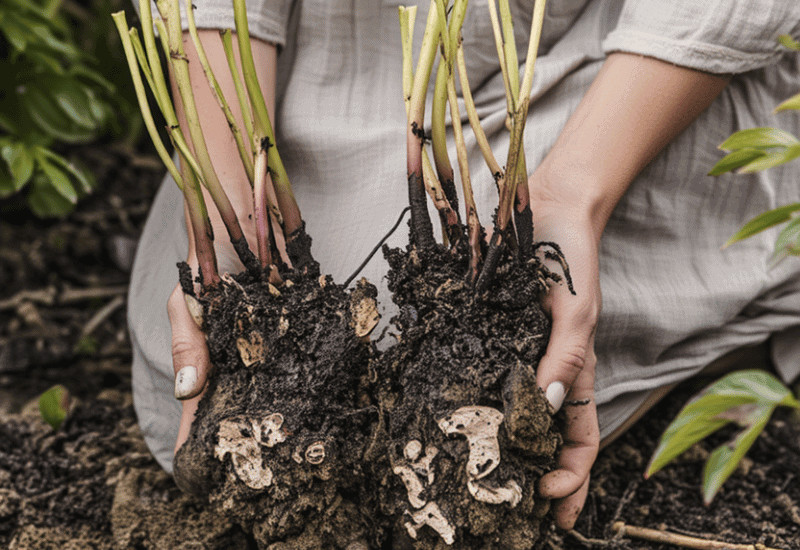
Every October, I find myself walking through the garden with a spade in hand, noticing the little clues my perennials leave behind. The daylilies don’t bloom as heavily as they used to, the centers of the coneflowers look tired, and the hostas have quietly doubled in size until they’re swallowing the path. It’s the garden’s way of telling me it’s time to divide.
I’ve tried dividing in spring, but fall always feels easier. The air is cool, the soil is still warm, and the plants seem to settle in without complaint. By the time winter has passed, the roots are established and ready to send up fresh, vigorous growth. And best of all? You get brand-new plants for free — from the ones you already love.
One oversized clump becomes three. A tired patch gets a second life. You can fill in gaps, start new borders, or share the extras with a neighbor. It’s simple, useful, and a little addictive (in a good way).
So if you’ve got a few plants that are looking past their prime, take this as your sign. Below, you’ll find 9 perennials that respond especially well to being divided this month, plus easy steps to help you get it done — without fuss or frustration.
1. Daylilies (Hemerocallis spp.)
Daylilies are at their best when they’re given room to stretch. Each fan produces strappy green leaves and a flower scape that lasts only a day, yet when planted in generous drifts, the effect is a rolling wave of color from early summer into July. But the rhythm falters when clumps grow too tight. The flowers shrink, bloom time shortens, and the border loses its sweep.
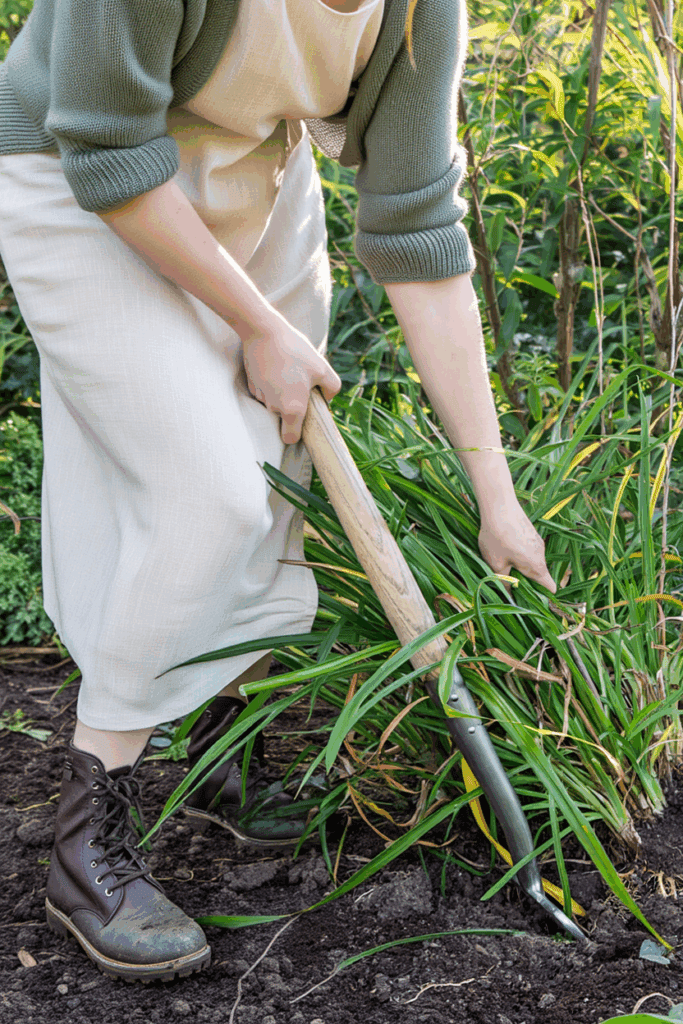
Fall division restores that rhythm. October is ideal because the soil is still warm but the heat stress of summer has passed. Lift the clump in its entirety and clear away the soil until you can read the crown. You’ll see it’s not a single plant but a mass of fans pressed together, each with its own roots. That’s the architecture of daylilies — and the reason they eventually need dividing.
Take sections that feel substantial in your hand, with three or more fans and a strong root system. Replant them at soil level, trim the foliage to six inches, and water deeply. If you want daylilies to knit together quickly, space them 18 inches apart; if you prefer to use them as bold accents, give them more breathing room.
Division is practical, yes, but it’s also creative. One overgrown clump can become a ribbon along a fence, a mirrored pair at an entry, or a mass planting in front of evergreens.
2. Astilbe (Astilbe spp.)
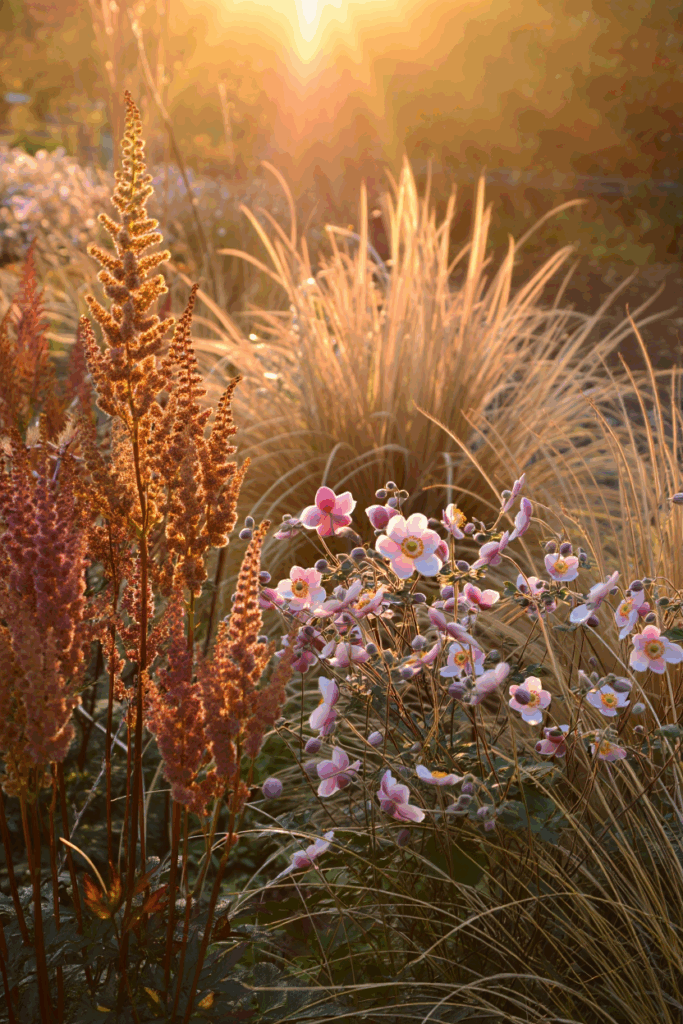
Astilbe has a reputation for being the “softener” in a planting scheme. Where hostas give weight and ferns bring structure, astilbe lifts the whole picture with those feathery plumes that catch even the slightest breeze. In June and July, a mature drift can look like a watercolor painting come alive. But here’s the part most gardeners miss: to keep that look, you can’t leave astilbe undisturbed forever.
By the fourth or fifth year, the center of the clump begins to thin and the crowns creep higher out of the soil. You may still get flowers, but they’ll be shorter, weaker, and less dramatic. That’s the plant’s way of saying it needs division.
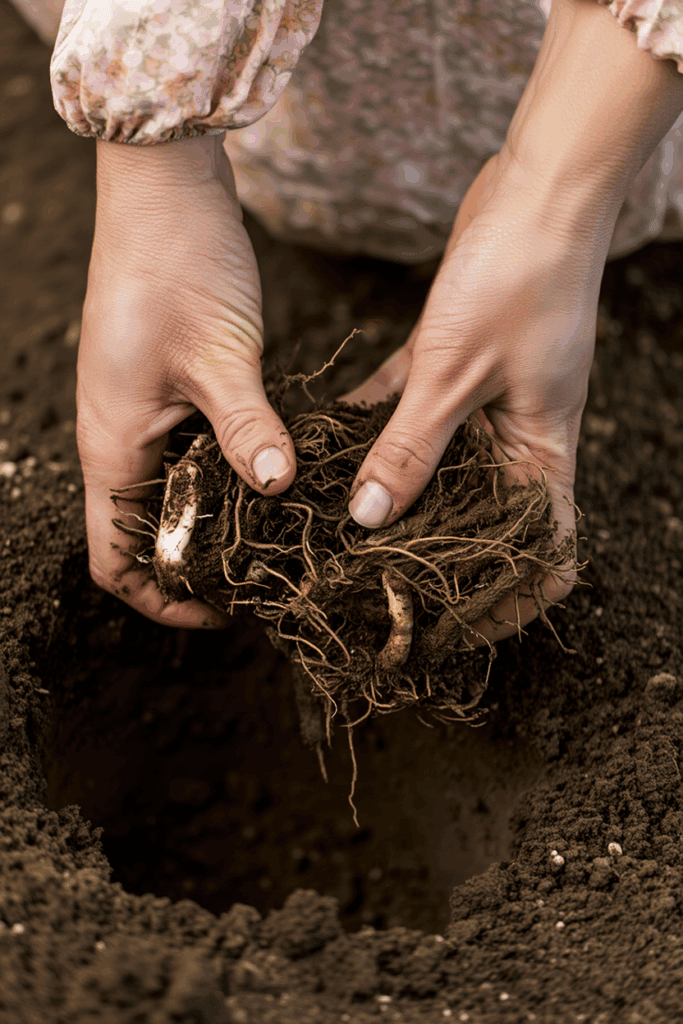
The process is simple, but timing matters. In fall—when nights are cool and the soil is still holding warmth—cut the foliage back and lift the clump with a fork. The root system is fibrous, not deep, so it comes up cleaner than you expect. Once the soil is off, you’ll notice the crown almost offers you the places to divide.
Take only strong sections with three or more shoots and plenty of roots attached. Replant them with the crowns sitting at the soil surface, never buried, and give each new clump at least a foot and a half of space. Water generously and add mulch to hold in moisture. Unlike hostas, astilbes won’t forgive you if the soil dries out.
3. Peonies (Paeonia spp.)
Every garden seems to have a story about an old peony. Maybe it’s one that bloomed faithfully for thirty years beside a porch, or another that was passed down from a grandmother’s garden and still flowers each spring. Peonies are legendary for their staying power — when planted well, they can thrive in the same spot for half a century or more. But even the most enduring clumps eventually grow heavy, crowd themselves, and start to bloom less. That’s when division becomes necessary.
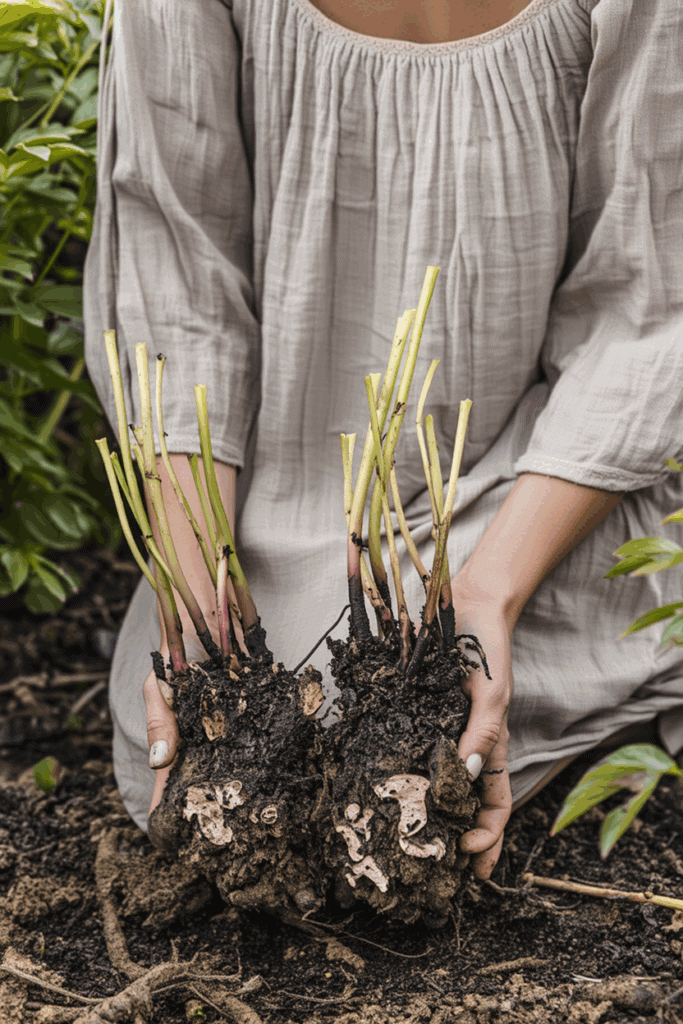
Fall is the only reliable window. Once the foliage has yellowed or died back, cut the stems to ground level and dig a wide circle around the plant. Expect the clump to be large and stubborn; mature peony roots often stretch two feet across and down. Wash the soil away until the structure is clear. You’ll see thick, tuberous roots with swollen buds — the “eyes” — at the crown.
Here’s the rule to remember: each division should carry three to five eyes and a generous portion of root. Smaller pieces will live, but they may take years to flower. Set the divisions back into rich, well-drained soil with the eyes no more than two inches below the surface. Too deep, and you’ll get healthy foliage but no blooms. Water thoroughly and mark the spot so you don’t disturb it over winter.
4. Black-eyed Susans (Rudbeckia fulgida, R. hirta, and related spp.)
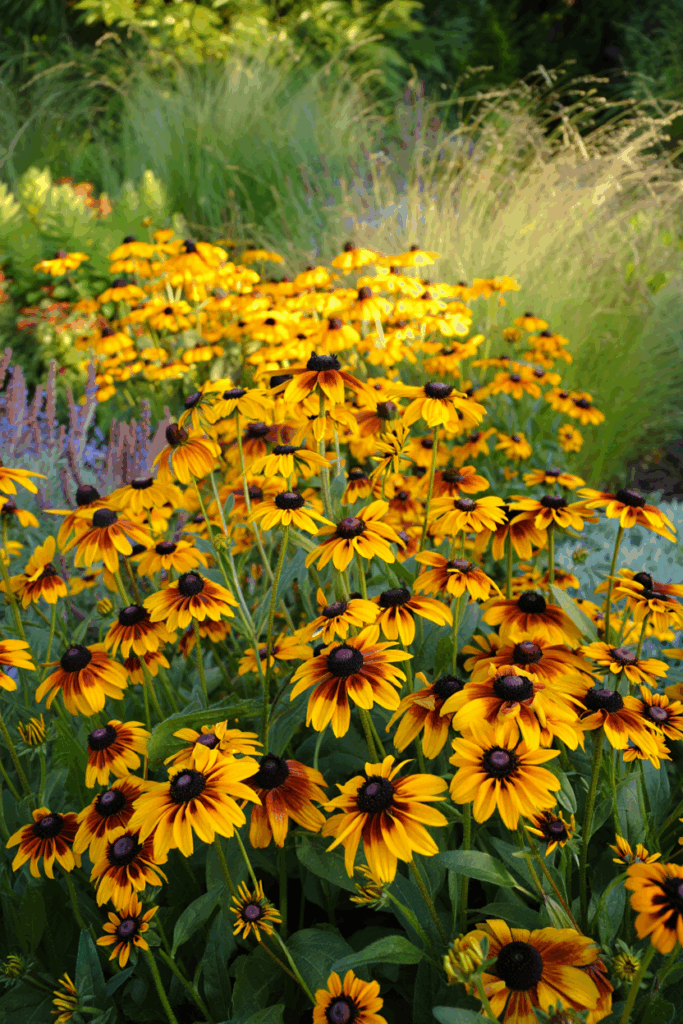
Black-eyed Susans behave like the extroverts of the perennial border. They spread, they self-seed, and they throw color around with abandon. That enthusiasm is part of their charm — every late summer they stand like golden lanterns, catching the light and feeding bees when other flowers are fading. But without a little guidance, they’ll eventually crowd themselves into exhaustion.
The key is to treat them the way you would an overfull border: edit and redistribute. Every few years, step in and thin the clumps. By October, the plants are winding down, and that’s the easiest time to do it. Instead of looking for weak centers or waiting for collapse, think bigger picture.

Where could a shot of golden color carry the border? Where do you want pollinator activity pulled? Division becomes less about saving the plant and more about directing its energy where you want it.
To do it, lift sections from the outer edges of the clump — these are the youngest, most vigorous shoots. Each piece should have several stems with a healthy root system attached. Replant those divisions into prepared soil at the same depth, water thoroughly, and leave space — about a foot and a half between clumps — so they can spread without smothering one another.
5. Crocosmia (Crocosmia spp.)
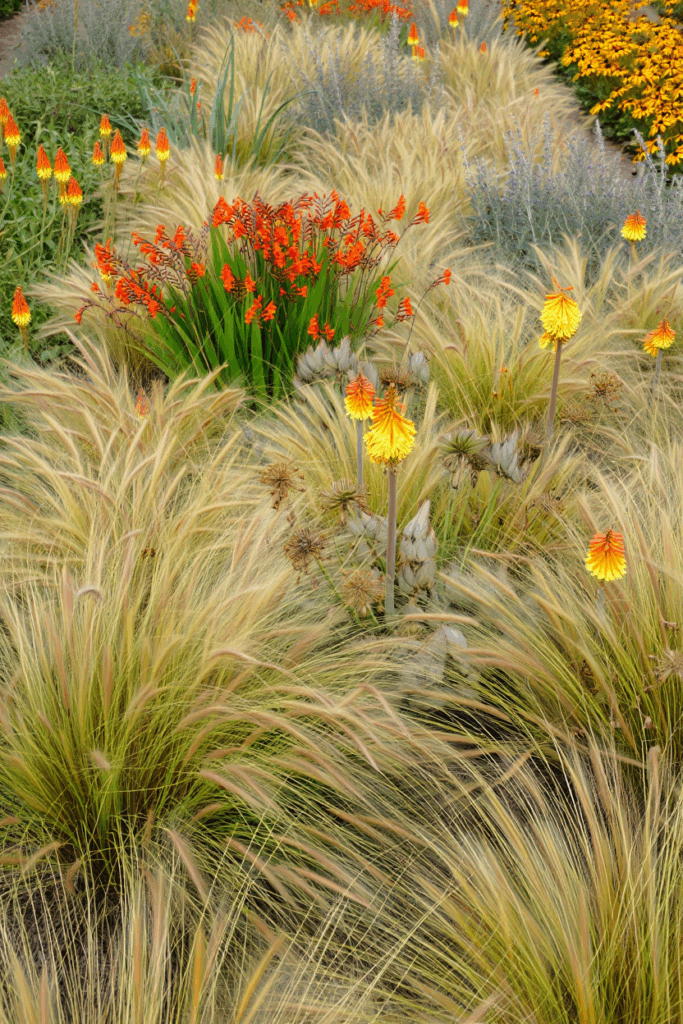
Crocosmia has a way of stealing the show. In midsummer, arching stems burst with fiery blooms — red, orange, or gold — that hover above narrow, sword-like leaves. Even a small group can draw the eye across a border. But their energy comes at a price. The underground corms multiply quickly, and before long a once-neat clump can swell into a dense mat, crowding itself and smothering nearby plants.
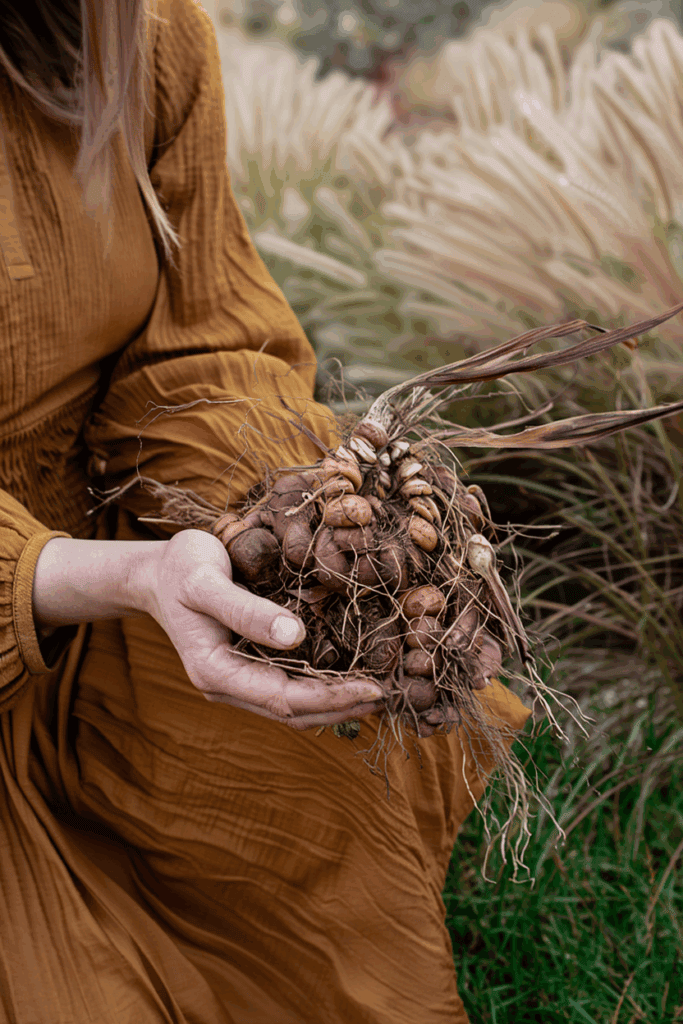
Division is the way to keep Crocosmia both beautiful and manageable. By October, after the flowers have faded and foliage is collapsing, lift the clump with a fork. You’ll see a tangle of corms layered on top of one another — new growth stacked above the old. That layered habit is what makes them lose vigor if left too long.
Pull the corms apart, discarding any shriveled or woody ones. Keep the firm, younger corms with roots attached — these are the ones that will carry strong flowers next year. Replant them three inches deep and about six inches apart, crown side up. In heavy soils, a layer of grit or compost beneath the planting helps drainage; Crocosmia will not tolerate sitting wet through winter. Water once after planting, then let the autumn rains do the rest.
6. Hardy Geraniums (Geranium spp.)
Hardy geraniums are the kind of plants you almost forget you planted — until you realize how much work they’re quietly doing in the garden. They weave borders together, soften edges, and spill gracefully where other perennials stand stiff. I remember the first time I divided a tired clump of ‘Rozanne’; I wasn’t sure it would bounce back. By the next summer, it had not only filled in beautifully but given me enough new plants to edge an entire path. That’s when I learned that division isn’t just repair — it’s opportunity.
These plants rarely complain, but after four or five years, they begin to show signs of fatigue. The centers open up, the foliage spreads farther than intended, and flowering slows. Division in fall is the simplest way to keep them vigorous.
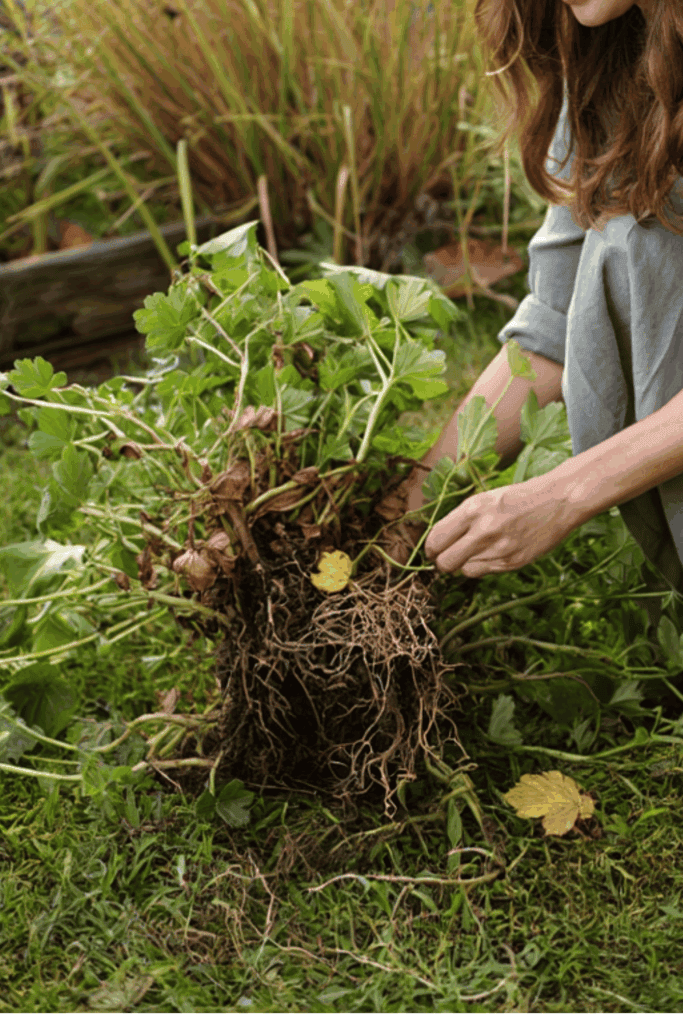
With the foliage cut back, lift the clump with a fork, shake off the soil, and you’ll see fibrous roots that are easy to split. Use your hands or a spade to separate into sections, each with a healthy set of roots and shoots.
Replant at the same depth, spacing about a foot apart if you want a carpet effect, or a little farther if you prefer neat, mounded clumps. Water well and mulch lightly. By spring, the divisions will be pushing fresh leaves, and by early summer they’ll be blooming as though they had always been there.
7. Coneflowers (Echinacea purpurea and related spp.)
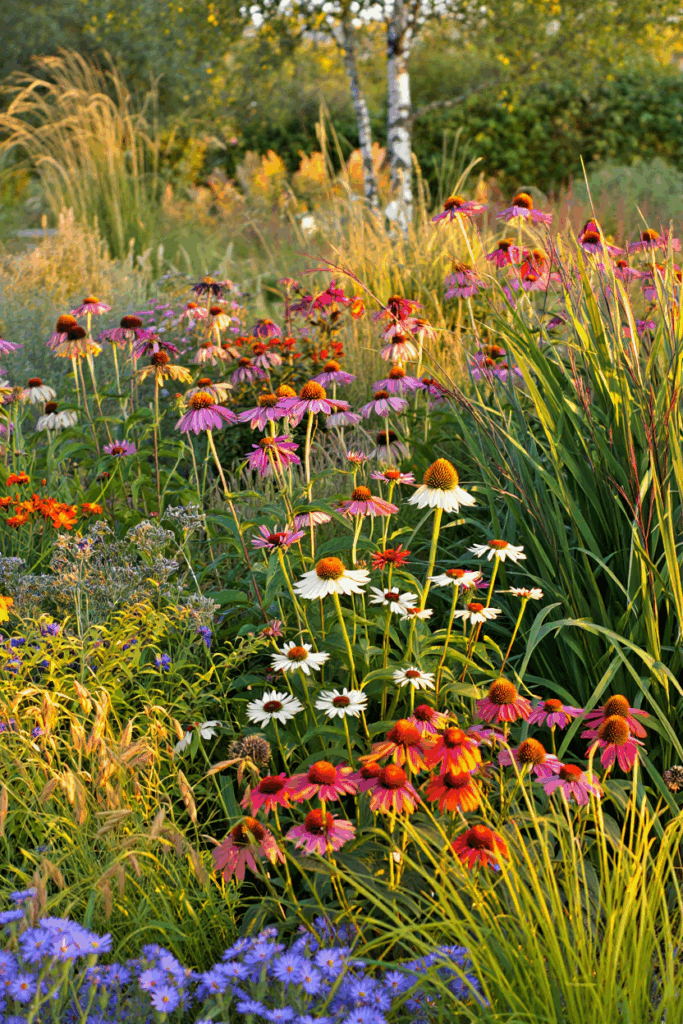
Coneflowers have a way of commanding attention without ever trying. Their petals arch back gracefully, their centers glow like bronze suns, and all summer long they stand as steady beacons for bees and butterflies. By late summer, finches arrive to work the seed heads, turning a border into a living stage. It’s no wonder they’ve become a signature perennial in American gardens.
But coneflowers aren’t endless performers. Left alone too long, clumps grow woody in the center, flowers shrink, and the strong, upright habit begins to sag. To keep them at their best, gardeners step in every few years to renew them. The reward is twofold — healthier blooms and more plants to carry their color across the garden.
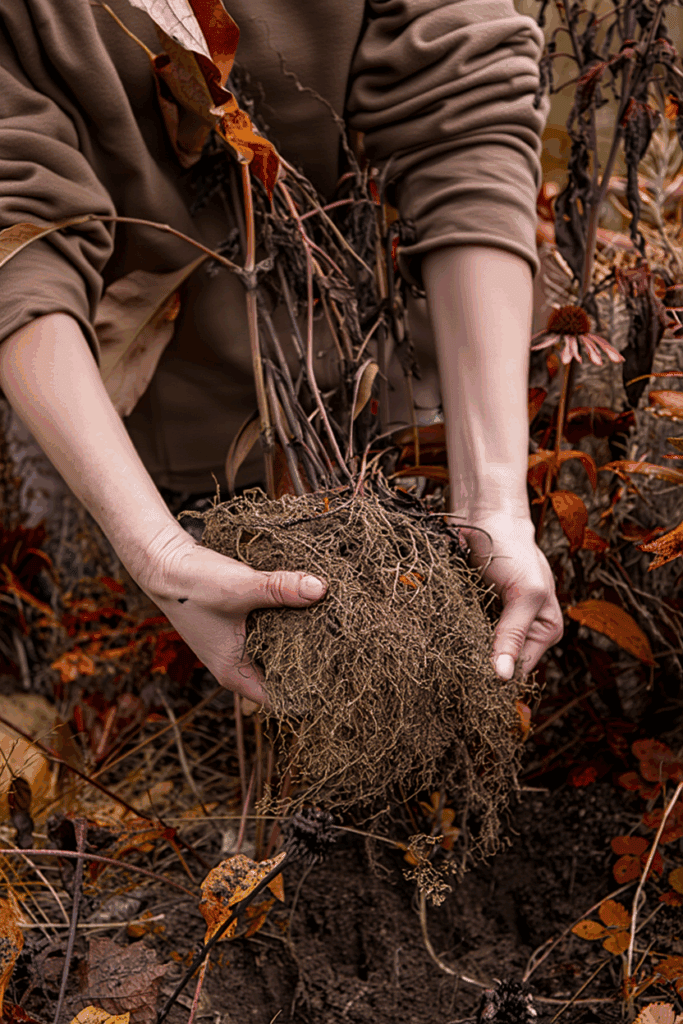
Fall is the natural time for this refresh. With the show over, cut the stalks back and lift the clump. Once the soil is shaken loose, the plant itself almost guides you — roots and shoots separating into clear divisions. Each sturdy piece, with several shoots and a good portion of root, is ready to begin again. Replant at soil level in full sun, give them space for air to move, and water deeply before mulching lightly.
The beauty of coneflowers is that a single clump can provide you with several strong new plants. Use them to repeat color down a long border, scatter them through a pollinator patch, or plant them in mirrored pairs to frame an entry. By spring, you’ll see vigorous new growth, and by midsummer the flowers will be buzzing again.
8. Hostas (Hosta spp.)
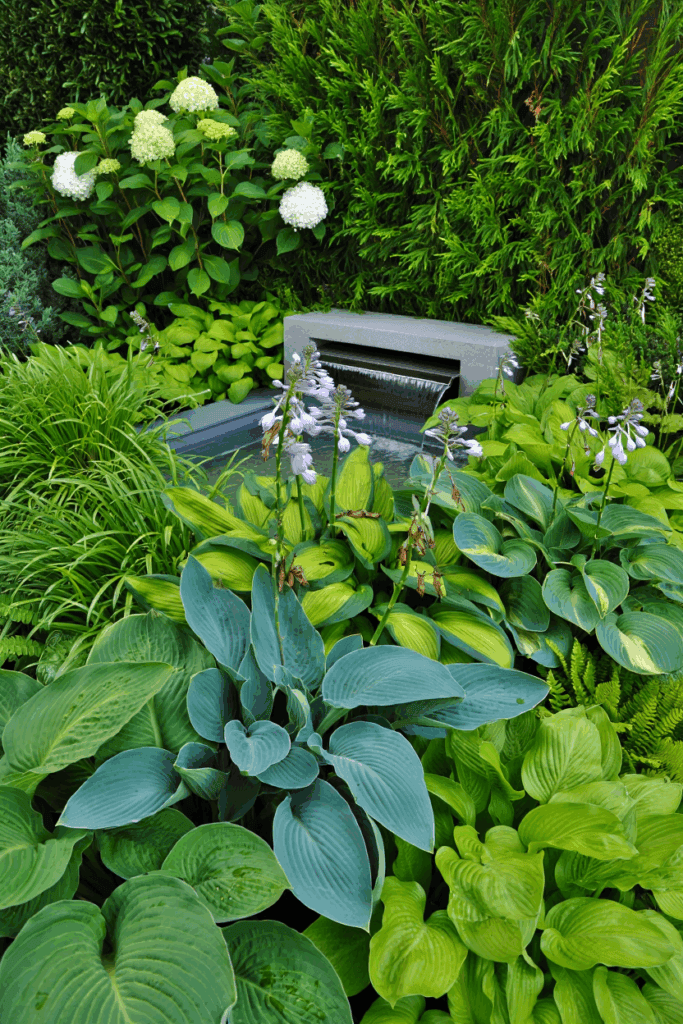
Hostas are generous plants that rarely complain, which is why many gardeners assume they can be divided anytime. That’s true, but if you want divisions to settle quickly and look strong the following year, timing matters. In spring, you can split them just as the shoots break through the soil.
The roots are packed with stored energy, and new plants establish easily. The trade-off is that the show will be lighter that season. In fall, the advantage is different. By October the leaves are fading, the air is cooler, and the soil still carries warmth. Those conditions make dividing almost effortless. The roots re-establish quietly over winter, and when spring arrives the clumps explode with growth as if they’d never been moved.
The method is straightforward once you know what to look for. Cut the foliage back to a few inches, then dig in a wide circle around the plant. Mature hostas can be heavy, so use a garden fork to ease the crown out in one piece. Shake or hose off enough soil to expose the crown, then cut it into sections. Each division should carry several eyes and a strong wedge of roots. Thin slivers will survive but take years to recover, so aim for generous pieces.
Replant at the same depth the hosta was growing before. Water thoroughly to settle the soil, then spread a light mulch to protect the roots as temperatures drop. By the second year the divisions will be fully established, filling shady borders with the bold leaves that make hostas the backbone of the garden.
9. Siberian Iris (Iris sibirica)
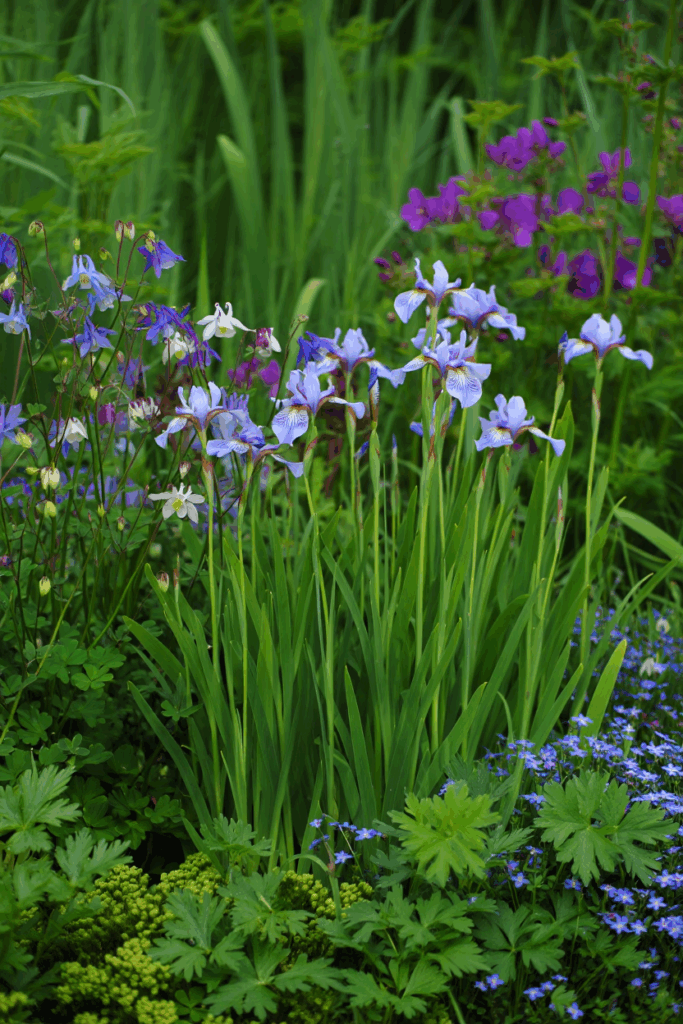
Take a look at your Siberian iris in October and you’ll probably notice the signs that it’s ready for attention. The leaves may be streaked with disease, some blades may be chewed from borers, and the clump itself looks tighter than it did a few years ago. That’s the plant telling you it’s time to divide.
Fall is the best season for this work. The foliage is already dying back, the air is cool, and the soil is still alive with microbes that help new roots heal. When you divide now, the plants settle quietly through winter and return vigorous in spring. Try the same job in spring and you’ll often find the iris sulks, refusing to flower for a year or more.
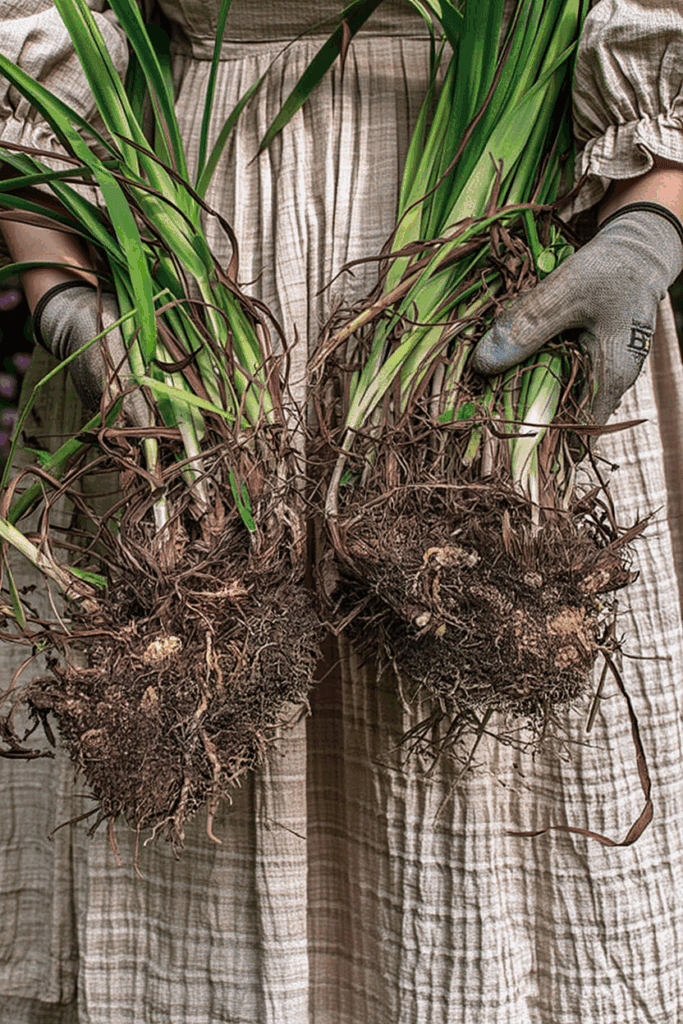
Here’s how to do it. Cut the foliage down to about six inches so you can handle the plant easily. Dig up the whole clump and shake or rinse the soil away. You’ll see a dense mat of fibrous roots, and this is where the work begins. Slice the clump into sections with a spade or knife, making sure each division has several strong fans and a solid wedge of root.
Replant the pieces right away in full sun, with the crown sitting at soil level. Space them about a foot and a half apart so they have room to grow. Water deeply after planting and add a light mulch to keep the soil evenly moist. Over winter, the divisions rest, and by spring, they’ll rise again fresh, healthy, and ready to flower.

Written By
Amber Noyes
Amber Noyes was born and raised in a suburban California town, San Mateo. She holds a master’s degree in horticulture from the University of California as well as a BS in Biology from the University of San Francisco. With experience working on an organic farm, water conservation research, farmers’ markets, and plant nursery, she understands what makes plants thrive and how we can better understand the connection between microclimate and plant health. When she’s not on the land, Amber loves informing people of new ideas/things related to gardening, especially organic gardening, houseplants, and growing plants in a small space.
